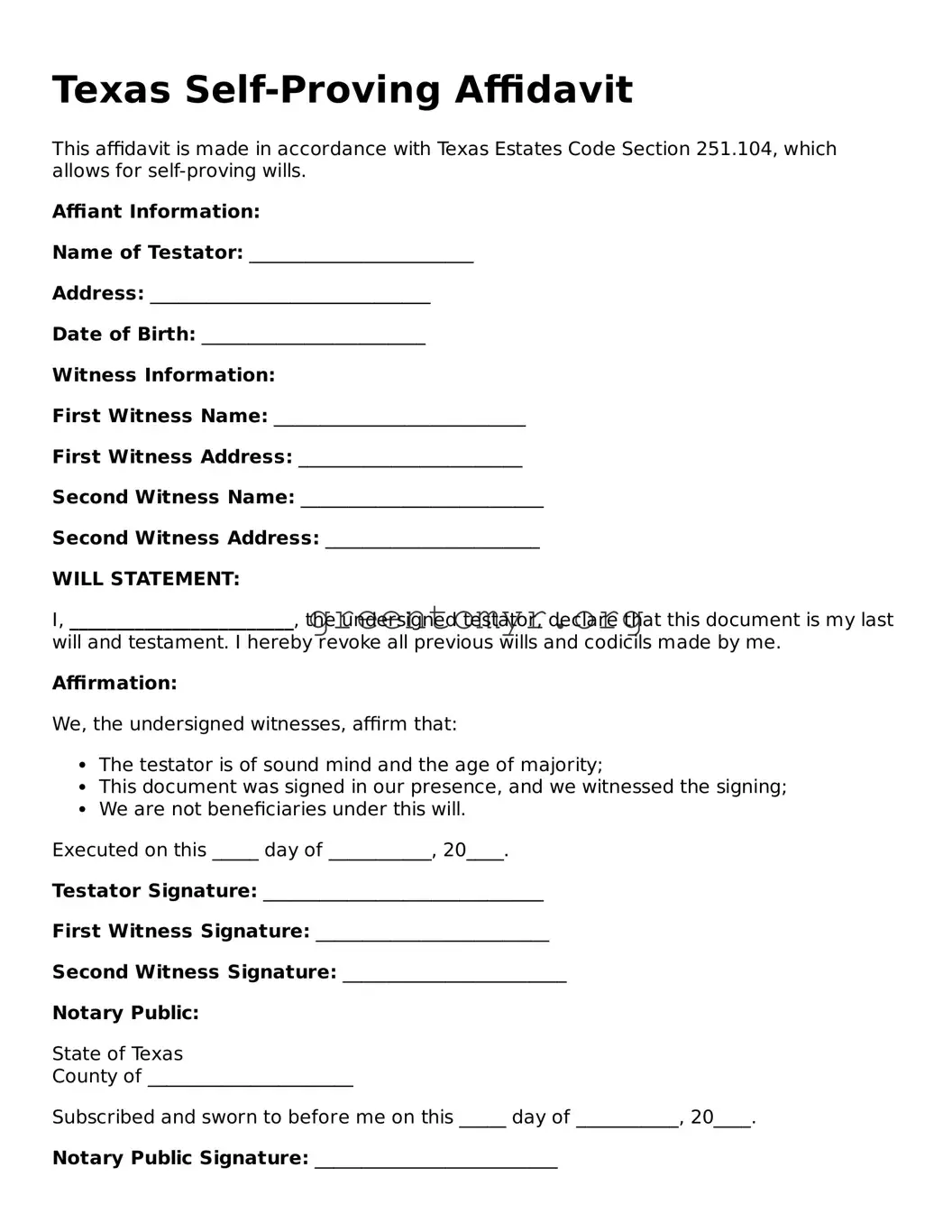Texas Self-Proving Affidavit
This affidavit is made in accordance with Texas Estates Code Section 251.104, which allows for self-proving wills.
Affiant Information:
Name of Testator: ________________________
Address: ______________________________
Date of Birth: ________________________
Witness Information:
First Witness Name: ___________________________
First Witness Address: ________________________
Second Witness Name: __________________________
Second Witness Address: _______________________
WILL STATEMENT:
I, ________________________, the undersigned testator, declare that this document is my last will and testament. I hereby revoke all previous wills and codicils made by me.
Affirmation:
We, the undersigned witnesses, affirm that:
- The testator is of sound mind and the age of majority;
- This document was signed in our presence, and we witnessed the signing;
- We are not beneficiaries under this will.
Executed on this _____ day of ___________, 20____.
Testator Signature: ______________________________
First Witness Signature: _________________________
Second Witness Signature: ________________________
Notary Public:
State of Texas
County of ______________________
Subscribed and sworn to before me on this _____ day of ___________, 20____.
Notary Public Signature: __________________________
Notary Seal: __________________________________
